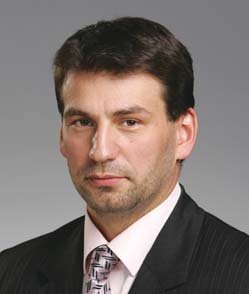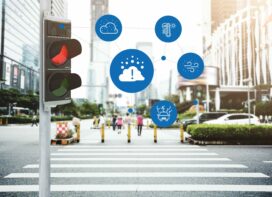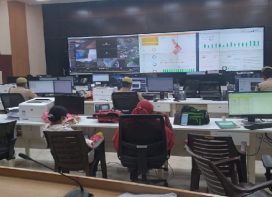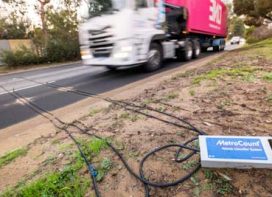Barco India offers a range of visualisation products for the Indian market, including large screen display solutions, video walls etc. What are the transport/traffic related applications?
There are two major applications in traffic and transport, one is the traffic monitoring itself which is basically the main area. Traffic always requires a certain special size of screen. Even the standard 16 / 9 ratio which now is the HD ratio is not sufficient in a traffic environment because the routes are normally much longer. Also, in a metro system, a special format is required which Barco can provide. The second application is for standard security and surveillance in transport. It?s not the traffic control room that is important here but the security control room over metro line; not the aspect or the picture that is the crucial but the 24×7 reliable applications.
The third important application is digital signage. In metro trains, most of the times one cannot really look outside the window, either it is too high or too low to look into something. This means people are looking at each other which can be tiresome beyond a certain point. Here the display screen is important.
Barco is the signage provider for most of the transport companies in the West and it would be interesting to see how this market develops in India, Currently transport companies still do not see the opportunities in this, so they do not want to spend big money on signage. More than at the station, it is the display screen which is viewed inside the metro trains. The Barco solution has the advantage of observing people and providing data and information back to the transport companies. The solution is able to detect the number of people in different age groups, their gender etc. So it is a lot of information which transport companies can use to optimise their services and make them more cost-efficient. To summarise, the three main applications are large video walls in traffic management, security & surveillance and signage.
Barco?s Overview MVD-5521 is a 55? LCD panel with super narrow bezel, making it suitable for tiled video walls in 24/7 environments.The LCD display uses IPS(in-plane switching) technology for consistent and accurate colours from all viewing angles.
You offer total solutions: hardware and software. How is Barco technology smarter?
The Barco solution is based on the fact that making the right decision is about seeing it. The Barco solution is capable of picking up any source, any picture anywhere, anytime and put either on your screen or on the meeting room or anywhere else. This is very important if you have multiple locations, which is obviously the case in transportation.
Regarding software solutions, we provide picture and video management solutions. But we are not a software company providing traffic management software. We are an open platform, in the sense that any software you work on is going to work on our video walls. Of course, we have our standard partners, but we never take over the role and responsibility of the system integrator. Similarly in signage, we provide the best possible equipment with the best possible software to run the equipment. But the problem here is that the client company has to have its own solution. We don?t bind ourselves to one particular platform. Instead, we deal with the pictures, the best pictures possible and the best picture quality & picture management.
Barco always goes through a system integrator because we do not believe that today with the special needs and necessities of projects, one size cannot fit all. For example, the Delhi Metro is different than the Hyderabad Metro or the Bangalore metro. Each project has its own challenges, which is why each of them requires customised software solutions. Similarly, our traffic management software is extensively custom made.
Barco India is in operation from 1996. How has the market for visualisation products been growing and what are the factors helping Barco to maintain the market leadership?
We started in 1996 with the sales office; today we have more than six hundred people here, out of which 23 are in sales. The significance of Barco India presence is not the sales but the manufacturing. Certain products in the control room environment are designed & developed in India, manufactured here, and exported all over the world. This is our strategy. India is a very important market because we have special products for the Indian market, mainly for utility, process control, transport and traffic fields. These products work in all weather and conditions, 24×7.
You have tie-up for R&D and joint venture for sales…
It is not a joint venture, it is a single family. We have our own 120 member R&D and sales team, all under one roof. We are the market leaders in control rooms and digital cinematography, but we believe quality is a key factor necessary for market leadership. However, in India, it is very difficult to maintain that quality level because of the price pressure. We have prices in India which we do not have anywhere else in the world. India has yet to realise how important quality is.
Normally I would walk away from most of the tenders available today. If somebody really doesn?t want to appreciate that he is buying the best possible system of the world, then I don?t think I have to be there. Similarly an increasingly large number of companies, especially in traffic and transport, realise that a low priced product now will prove more expensive later. It is better to buy a reasonably good future-proof solution, even if one has to pay 15 – 20% more. We have our systems in this country running for fifteen years with the customer coming back and saying,? I don?t want to have a tender, could be so kind to change that for me because I don?t want to go anywhere else.?
Can you give more details on Barco?s offerings for Bangalore Metro, Delhi Metro and Delhi international airport?
An airport environment is completely different than say, a metro environment. The security standards at an airport are much higher. The picture quality has to be absolutely accurate, 24×7. In the metro setting, we have the challenge of all equipment getting exposed to weather and dust. In metros it is also much more of people, whether on the stations or even in the control room.
Another important challenge is the high service level required. None of these places can afford to have the wall down for an hour. So we have to make sure that in every city, we have engineers on site who immediately fix any problem that comes up. In London, we have a video wall which is flying four thousand cameras, four thousand camera pictures. The smart solution is to find the right one, show the right picture at the right time at the right place. We have in our control room management software, a predefined layout, which is tested all over the world. In any situation, at one click of the button, one can see exactly what one needs to see. Flexibility and simplicity are two very important things.
Are systems for air traffic management and avionics in use in India?
The air traffic management system in Delhi airport is again a special Barco system. There are only two companies in the world who are capable of providing displays for air traffic management, and one is Barco.
?The marketing plan for India is to have the best possible product along with an aggressive price. We keep the quality ? the Barco quality, we don?t go lower than a certain level. We still invest a lot to find new products and to make products suitable for this particular market. However, for Barco, the major drivers for being in India are not only the market, but also the talent pool, the manufacturing capability and the R& D capability.?
What else in aviation are you are planning in India?
We are in into simulation training for pilots as well. If you fly in India, there is a very good chance that your pilot was trained on a Barco simulator. This is again a situation in which there is no room for errors. We are trying to increase our presence in India but there are hurdles. In India, the tenders are always awarded to the lowest bidders; there is no provision for bidders who give superior quality. Whereas in Western Europe and in the US, they have a points system for public procurement; it is not that the tenders are awarded to L1, the lowest bidders.
The competitors earn some points for price, some points for quality, some points for serviceability and additionally, some points for local production. At the end of the day, points are added up and the bidder with the highest points wins; so it is not only the price. This system does not exist in India at present, but I think it will come in due course of time, for example, when the air traffic grows much larger.
You have your own manufacturing set up here
We have an international class, ISO 14001, CMMI level 3 manufacturing facility in Noida which employs 600 people. There is a software research lab where we design the products, make them and also deliver them to other parts of India as well as the rest of the world. We have single piece machines in India. Custom made, low volume, high density manufacturing is our strength.
A brief on Barco worldwide and the marketing plan for India in coming years, considering the huge growth of traffic infrastructure in the country?
Barco has about 3700 employees around the world with manufacturing facilities in Belgium, the US, China and India. Each facility is specialised in one particular product or product range; in India, we are specialised in control room products. The headquarters is in Belgium in a tiny town called Kortrijk. We are proud to say that we are the biggest export company in Belgium after the beer makers. I think the strength of this company is the history. We are really on the edge for the last seventy five plus years. Being a tiny little nation in Europe, Belgium, with a population smaller than Delhi, is always sort of forced to adapt. I think we are capable of anything because we have to finally adapt it. Probably the future of the company is the technological communication skill.
The product life cycle is shortening and a lot of things are happening. A lot of ?followers? are learning things quicker than they did before. On the other hand, the new ways of thinking and innovative approaches to product development have to be considered. For this, we have to obliviously spend a huge amount of money on R&D ? in the US, Germany, France, China, Belgium and India ? and this money has to be recovered from the market. We may not be the cheapest but I still believe that our approach is paying back a market which is becoming increasingly sensitive on quality.
Mangala Chandran
 TrafficInfraTech Magazine Linking People Places & Progress
TrafficInfraTech Magazine Linking People Places & Progress




